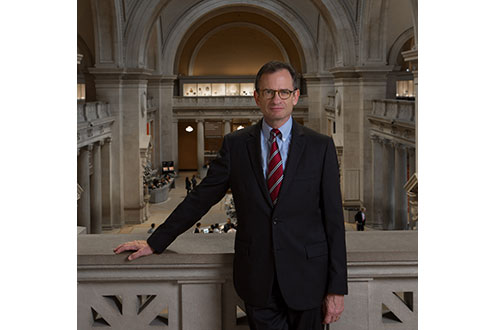My initial reaction to this morning’s announcement from the Metropolitan Museum*–that Daniel H. Weiss is now President and Chief Executive Officer, with the TBD director reporting to him–is skepticism.
 I’ve got nothing against Weiss. I don’t know him. But as a long-time student of corporate governance and museum governance, I don’t think this particular arrangement is best at the Met. Sometimes it works at other museums, sometimes not. It usually depends on the personalities involved.
I’ve got nothing against Weiss. I don’t know him. But as a long-time student of corporate governance and museum governance, I don’t think this particular arrangement is best at the Met. Sometimes it works at other museums, sometimes not. It usually depends on the personalities involved.
But for me, the Met’s director, should be the paramount leader (that’s sounds ominously North Korean, and I don’t mean it that way!). It’s the Country’s best museum; it should have the best director and to get that person must be able to offer the job as CEO.
The Met’s press release says this:
…the Board concluded that Weiss’s background as a distinguished scholar with a doctorate in art history and college president, as well as his outstanding tenure for the past two years as President of The Met, make him an exceptional fit to lead the Museum. The Board’s decision follows a comprehensive review of the Museum’s organizational structure, roles, and leadership titles, followed by extensive discussions in a series of Executive Committee and Board meetings over the past three months….
The release also said that “…the Museum will lead a search to appoint a Director of the Museum, who will report to Mr. Weiss. The President and CEO will be responsible for the overall leadership of the Museum, and the Director will lead the core mission functions.”
Interestingly, the Met noted that the director reported to the CEO in the past–but that is not what they said in 1999. Here’s the release:
The Metropolitan Museum of Art has had both single- and dual-leadership models in the last four decades of its 147-year history. In the single-leadership model, the Director has previously reported to the President, as Philippe de Montebello did upon becoming Director in 1977. More recently the President has reported to the Director and CEO, which began in 1999 when Mr. de Montebello was appointed to assume the role of Director and CEO.
But when I was a culture reporter for The New York Times, and wrote in January, 1999 an article about the departure of William H. Luers as President, the Met insisted on a correction. Here was my lede:
In more than a dozen years as president and chief executive of the Metropolitan Museum of Art, William H. Luers never really spoke out about the nation’s biggest art museum or his tenure there. That was the deal he cut with the museum’s director, Philippe de Montebello.
Mr. de Montebello, though technically his subordinate, rules over the Met’s art, and has always aspired to hold both jobs one day, as most museum directors do.
Here is what the Met insisted upon:
An article yesterday about William H. Luers, the departing president of the Metropolitan Museum of Art, misstated the relationship between his position and that of Philippe de Montebello, the museum’s director. The two have been equal, both reporting to the chairman; the director is not subordinate to the president.
For me, this only points out the sensitivity of the subject. And it raises the prospect that some excellent candidates for director will not want the job if they cannot be the CEO.
Watch, though: this will be the time when the Met decides to have a woman as director, but not CEO.
*I consult to a foundation that supports the Met.
